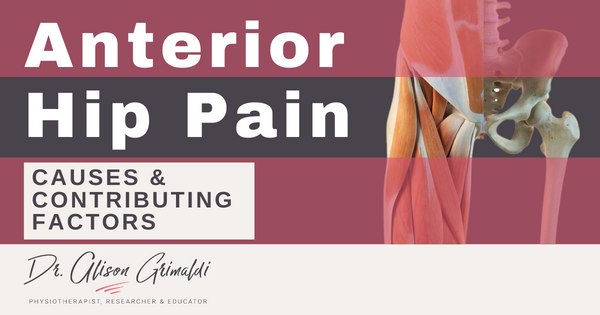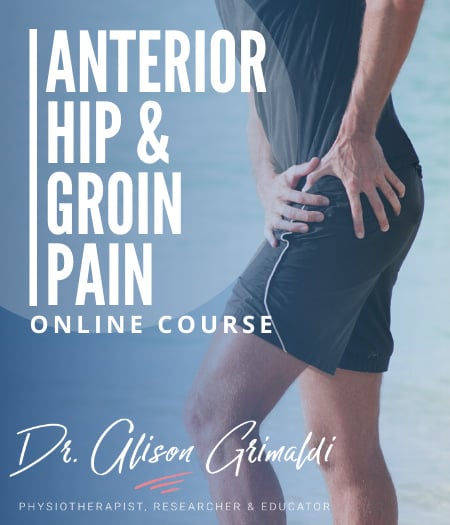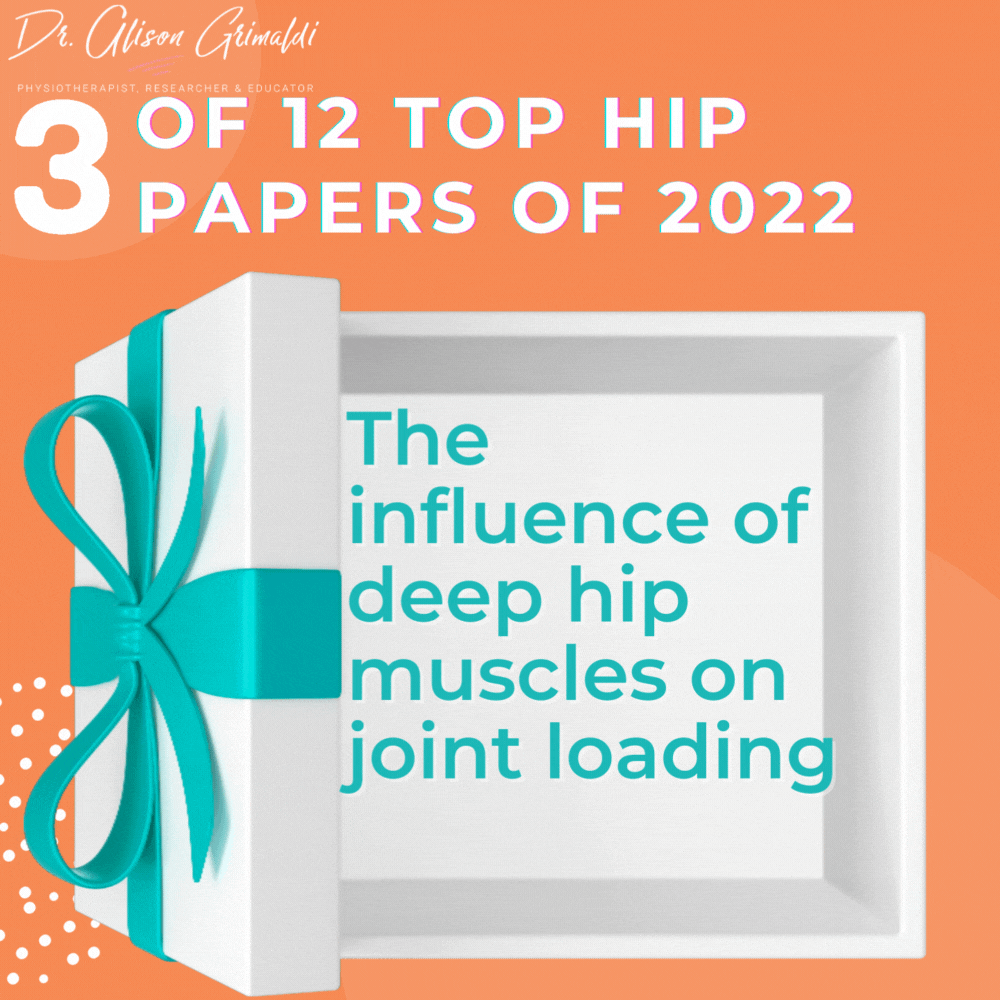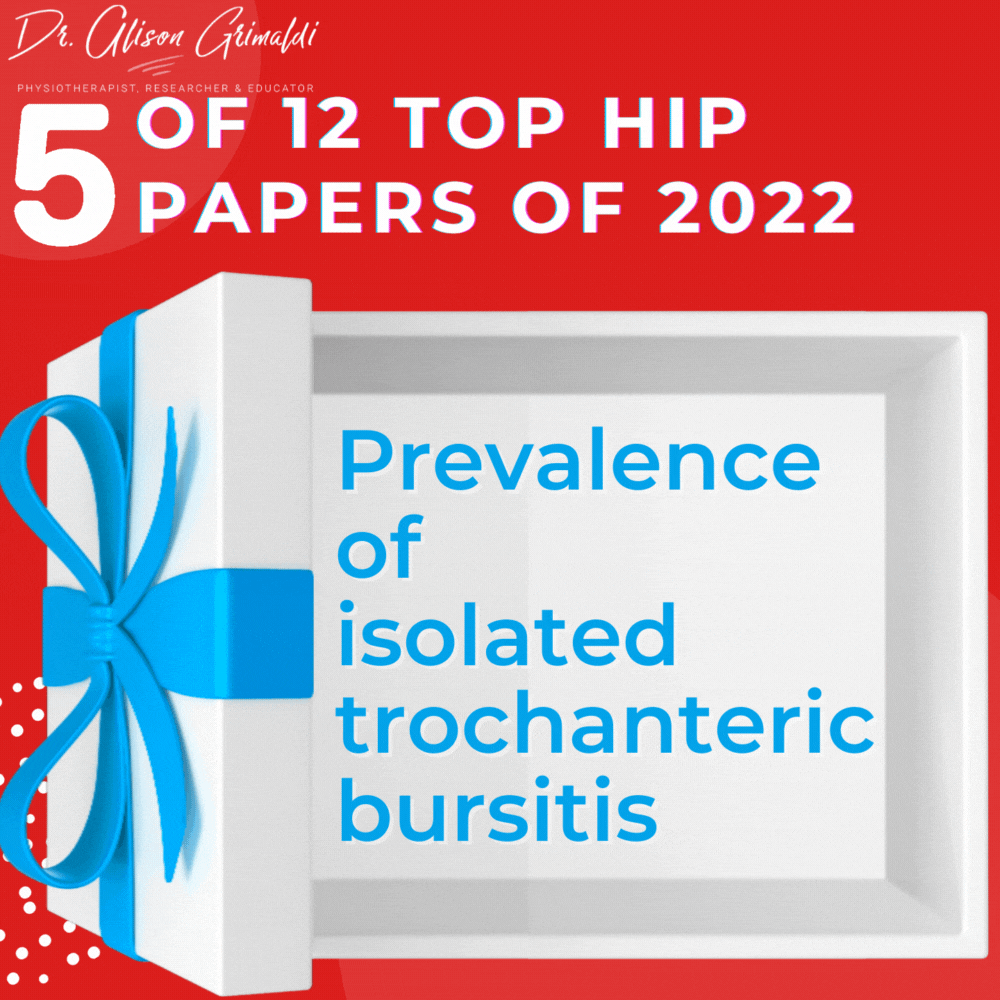4 of 12 Top Hip Papers of 2022 – Hip microinstability in cam-type FAI during walking

Welcome back to day 4 of my 12 Top Hip Papers series of miniblogs from 2022. If you missed Day 3, you'll find a link at the bottom of this page to take you back. The featured paper for day 4 suggests that microinstability evident in early-mid range tasks (gait), may also be a contributing factor to development of hip osteoarthritis in those with femoroacetabular impingement syndrome (FAIS). Interesting stuff! Read more below about hip microinstability in cam-type FAIS - key findings of this paper and the clinical implications.
Discover our Anterior Hip & Groin Pain Course
If you enjoyed this blog, you might like to take the online course on Anterior Hip & Groin Pain - 5 hours of guided online video content. Better your skills and understanding of the anterior hip and groin and become equipped with the knowledge to administer clinical diagnostic tests and management strategies.

4 of 12 Top Hip Papers of 2022: Hip joint microinstability in cam-type FAI during walking
The paper I have selected for No. 4 of our 12 Top Hip Papers 2022 added some interesting insights to our understanding of cam-type FAIS. While end-range impingement is well understood as a mechanism of chondro-labral overload, this study suggests that hip microinstability in cam-type FAIS evident in early-mid range tasks (gait), may also be a contributing factor to development of hip osteoarthritis.
Study Aim:
The primary objective of this study was to investigate hip joint mechanics through in vivo, dynamic measurement of the bone‐to-bone distance between the femoral head and acetabulum during walking in patients with cam FAI syndrome and morphologically normal controls.
What was done:
Dual flouroscopy imaging was used to assess bone-to-bone distance between femoral & acetabular bone surfaces during walking and inclined walking in 7 people with cam-type FAIS and 11 asymptomatic individuals with typical morphology. Both groups had typical acetabular morphology.

Key Findings:
The aetiology of this microinstability is unclear. Does the cam shape still have some impact on mechanics in lower ranges? Posterior capsular laxity may develop over time from repetitive end range motion where the fulcrum effect can create an overstretching of the posterior capsule. This laxity may contribute to instability. Pain and muscle impairments may also influence joint mechanics.
With current levels of understanding, this paper suggests that joint protection strategies will need to consider more than just end-range loading. Addressing muscle and kinematic impairments may assist with providing joint support through range. Below are some of the key findings of this paper:
- The change in minimum bone-to-bone distance in those with cam FAIS was significantly greater: 1.38-2.54mm compared with 1.16-1.84mm for the control group.
- The FAIS group demonstrated greater change than controls in the minimum bone-to-bone distance during gait, in all regions except the anterior superior region.

Clinical Implications:
- Those with FAIS are generally thought to have 'stiff' hips with less concern for hip stability, except at end-range due to a fulcrum effect.
- This study shows that hip microinstability in cam-type FAIS may occur even in low-mid range movement. These altered mechanics may contribute to pain and the higher risk of development of hip osteoarthritis.
- Optimising function of the deep hip musculature may assist in controlling this mid range adverse joint motion and chondrolabral loads.
Another great Anterior Hip Pain blog

Anterior Hip Pain: Causes & Contributing Factors
Adequate consideration of individual causes and contributing factors is important for best outcomes.
Like to learn more about assessment and treatment of patients with Femoroacetabular Impingement?
In this course, you can find detailed information on pathoaetiology, assessment and management of anterior hip pain associated with FAIS and many other conditions. To learn more, take the online course, or join me in a workshop.
This online course is included in Hip Academy and Hip Academy members receive discounts for online workshops.
I hope you enjoyed the infographics and key learnings from Day 4 of my 12 Top Hip Papers of 2022. There are 8 more papers to come, so stay tuned and return to the blog page each day to see what other top papers and infographics I have for you!
If you missed yesterday's Hip Paper, click the link below to catch up!



